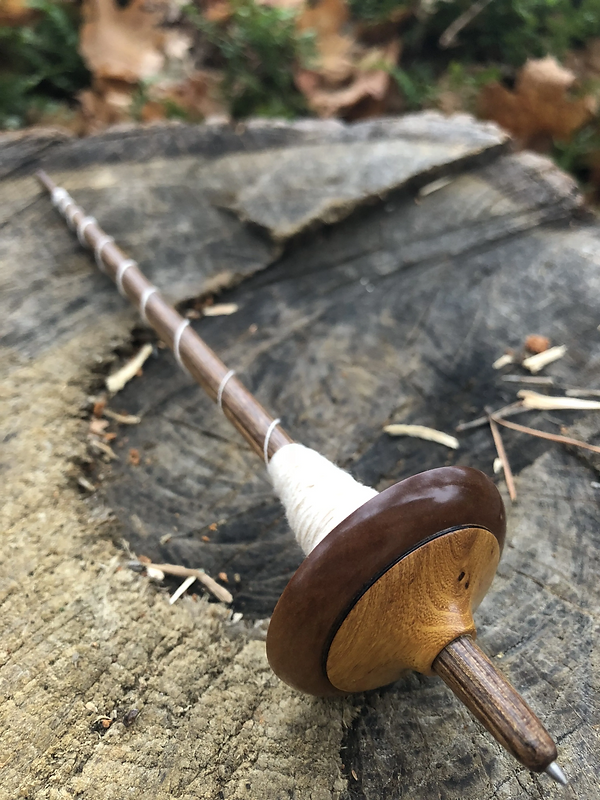Indian Spinning
This is where I started. The wheel they use is called a chakra or charkhra depending on how it’s translated, though the word translates to English as “wheel” so it’s actually not super helpful in looking at things translated from Hindi. There are two main types, a standing and a peti, box, or “book” form.[1] The standing form is the older of the two being written about as early as the 13th century, and it is difficult to tell how much older as not many people wrote about the joys of spinning in their books until later, but it’s been a hot minute.
Modernly, the book form is a novelty spinning wheel that is relatively cheap to purchase compared to most wheels and can be found on quite a few websites where spinning wheels are sold, though there are delicately few instructions for them. I have also found instructions for 3D printed book charkas which might be good for classes, but I’m not sure how good they would be for general wear and tear. Book chakras were invented by Gandhi in the 1920-1930. Thus, it's not in SCA period, but they are cool and I totally understand if people want to use them.
Hand spinning was assumed to have been done, but almost no written records survive of the hand spinning process. The takli is a type of supported spindle that has survived to now, but there is no evidence for suspended or drop style spinning. The takli was very small, made of metal, and would have been used to spin silk and cotton fibers super fine.[2] The hand spun tradition is mostly lost wheels became very common in India in the early 1900s.[3]
Silks are super common to see spun in India. As are cottons. Those are probably the two most common fibers depending on exactly where you are in India (it’s a big place!) with the north seeing a little more silk than the south, though the south would see silk in the cities and wealthier areas.
A picture of a full sized standing charkhra. The one on display is a miniature version of this. Most are about 18-24 inches tall, and about 36 inches long.[4]
A picture of an open book charkhra. This will disassemble and fold down to be the size of a large book. I've had success spinning wool on it more than cotton or silk, but that might be because I'm more practiced in wool.[5] Remember: No Period, But Fun!!
Picture of a takli. This is a supported spindle, very much like the kind I have on display. I'm not very good at it, but I can make decently thin silk threads with it. They just are a little lumpy.[6]



References
[1] Nakonechny, Joanne. “First Steps in Charkha Spinning.” Spin Off, July 4, 2022. https://spinoffmagazine.com/first-steps-in-charkha-spinning/.
[2] Chitra Balasubramaniam, “Threads of Heritage: Understanding the Ceremonial Dhoti,” Spin Off, September 23, 2024, https://spinoffmagazine.com/ceremonial-dhoti/.
[3] Schroer, Andrea. “Tahkli Spindle Spinning How To.” Mielke’s Fiber Arts, January 4, 2018. https://www.mielkesfiberarts.com/tahkli-spinning-how-to/.
[4] Dinodia Photos. “Mahatma Gandhi Charkha Spinning Wheel India Stock Photo.” Alamy. Accessed February 6, 2025. https://www.alamy.com/stock-photo-mahatma-gandhi-charkha-spinning-wheel-india-43150626.html.
[5] Nakonechny, Joanne. “First Steps in Charkha Spinning.” Spin Off, July 4, 2022. https://spinoffmagazine.com/first-steps-in-charkha-spinning/.
[6] Josefin Waltin, “Spinning Cotton on a Tahkli Spindle,” Josefin Waltin spinner, November 3, 2018, https://waltin.se/josefinwaltinspinner/spinning-cotton-on-a-tahkli-spindle/.